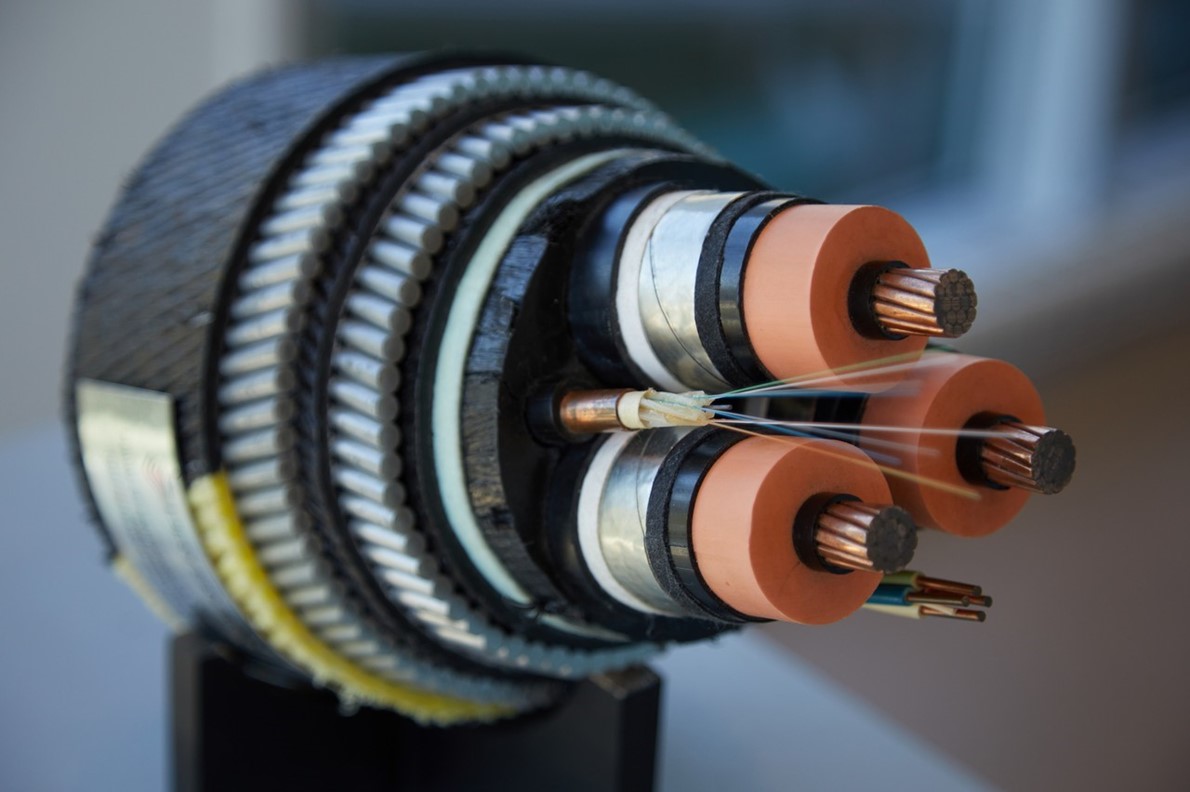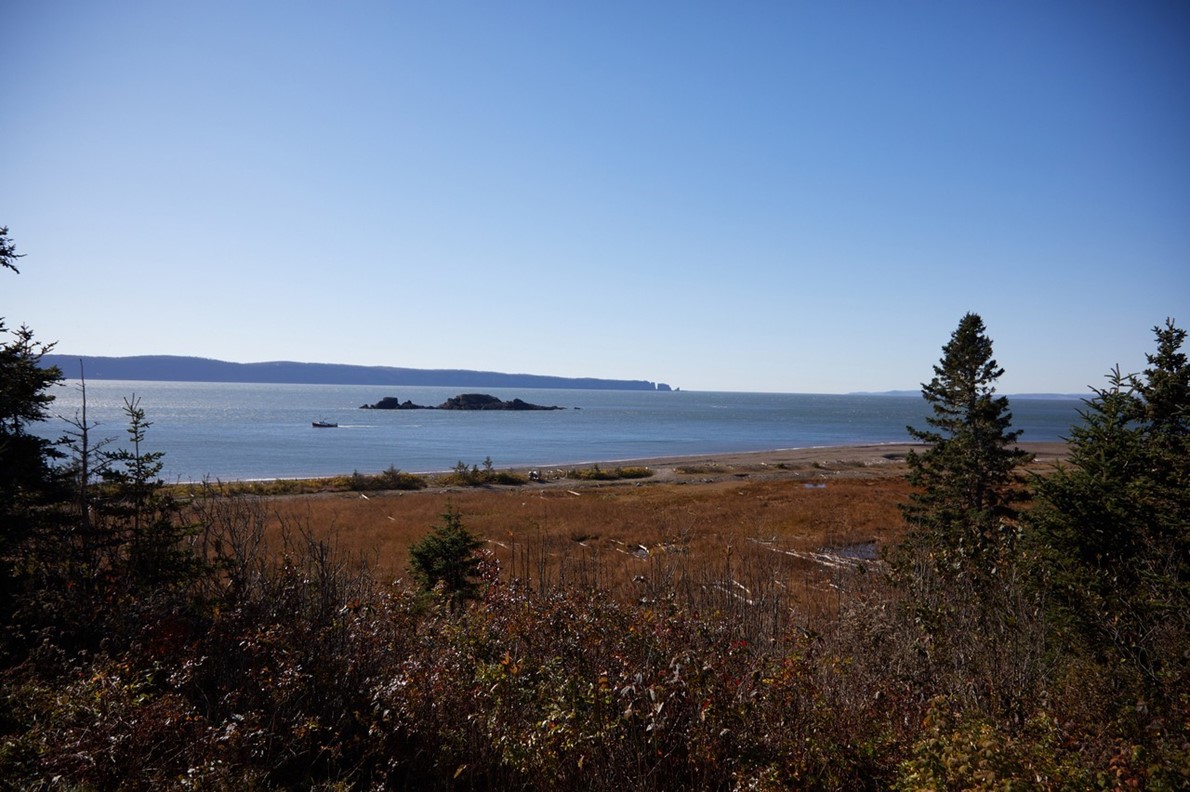The Bay of Fundy, off the Canadian
provinces of
Nova Scotia and New Brunswick, has long tantalized and frustrated
engineers hoping to harness its record-setting 15m high tide to generate
electricity.
اضافة اعلان
After more than a century of attempts, there has
only been one small power-generating station, since closed, and countless
broken dreams, abandoned plans, and bankruptcies.
Even so, a new coalition of entrepreneurs and
scientists in Nova Scotia are trying again. One participant, a company called
Sustainable Marine, has devised a new technology and successfully operated it
for more than seven months, longer than any other similar system, producing
enough electricity for about 250 homes.
 Lindsay Bennett, the acting general manager of Force, a provincial government tidal research station along the Bay of Fundy, on November 2, 2022.
Lindsay Bennett, the acting general manager of Force, a provincial government tidal research station along the Bay of Fundy, on November 2, 2022.
Sustainable Marine’s innovation is that rather than
placing stationary turbines onto the seabed as has been tried in the past, it
floats movable ones on the surface, lifting them when a dangerous object
approaches and for maintenance.
If the platform continues to prove reliable, is
economically viable, and does not harm marine life, it will have harnessed not
just a new source of renewable energy, but also one of the most reliable ones
in the world. Because unlike wind or sunshine, tides are unceasing and
completely predictable.
Sustainable Marine is one of five racing to produce
a viable method of electrical generation in the Bay of Fundy and, it hopes, in
dozens of similar tidal regions in the world.
Scientists collaborating with a government-financed
research center are studying the impact of the technologies on marine life. A
fishing group unsuccessfully went to court six years ago to block the
deployment of a turbine at the center’s test site, and ran billboards with the
catchphrase “Grinding Nemo”.
Regulators have required
Sustainable Marine to
outfit its platform with a variety of underwater sensors and cameras to track
sea life and to automatically lift the turbines when whales or other large
creatures approach.
 A detail of a cross-section of a 34,500-volt submarine cable on display at Force, a provincial government tidal research station along the Bay of Fundy.
A detail of a cross-section of a 34,500-volt submarine cable on display at Force, a provincial government tidal research station along the Bay of Fundy.
If Sustainable Marine’s underwater sensors and
cameras confirm assertions by the tidal power generation industry that fish,
whales, and other sea creatures will safely swim around their turbine blades
and the prototype proves reliable, it may become part of a large-scale
development.
Engineers and scientists in Nova Scotia are driven
to harness the tides partly because the province is one of the few in Canada
that still relies heavily on fossil fuels to generate power.
While the country’s three largest provinces long ago
traded fossil fuels for other energy sources, Nova Scotia still produces 51
percent of its electricity by burning coal, the mining of which was once a key
part of its economy. With the province now committed to eliminating those
plants by the end of the decade, attention is again focused on the tidal power
generation potential of the Bay of Fundy.
Every six hours in the Minas Passage — the narrow
portion of the bay near the port of Parrsboro, Nova Scotia — the water level
rises or falls about 17m, roughly the height of a four-story building.
In all, 14 billion tonnes of water make the trip
across the bay every 12 hours at speeds of up 19kmph. The Minas Passage is
estimated to have the potential to generate about 7,000 megawatts of power,
more than double the amount of electricity currently generated by other sources
for the province of nearly 1 million residents.
Sustainable Marine is one of five racing to produce a viable method of electrical generation in the Bay of Fundy and, it hopes, in dozens of similar tidal regions in the world.
The Bay of Fundy has “been called the Everest of
tides,” said Lindsay Bennett, the acting general manager of Force, a provincial
government tidal research station about 9.6km from Parrsboro. “It’s been
described over the years as sort of the Fundy standard. If you can operate your
technology here in this environment, you can operate your technology anywhere
in the world.”
The Bay of Fundy’s funnel shape is part of the
reason for its exceptional tides. Along its 154 or so kilometers of length, the
bay dramatically narrows and its depth drops from 233m to 44m.
The bay’s water has a natural rocking motion, like
any large body of water. But what distinguishes the Bay of Fundy is that is
that it rocks back and forth at the same frequency that its tides rise and
fall. The tide amplifies the sloshing motion — and vice versa — each making the
other faster and higher, increasing the tide.
 A view of Black Rock in the Bay of Fundy, between Nova Scotia and New Brunswick, on November 2, 2022.
A view of Black Rock in the Bay of Fundy, between Nova Scotia and New Brunswick, on November 2, 2022.
Seven years ago, Nova Scotia passed a law to support
the development of a tidal power industry that protects the environment. The
province has since selected five companies to run demonstration projects that
would test and show off their technologies.
The first project did not offer an auspicious start.
It involved fitting a turbine about 15m in diameter on the seabed. But almost
as soon as it was in the water, the force of the tide shredded the turbine.
“It was under-engineered,” Bennett said. “Nobody had
a full understanding of the power of these tides.”
The potential power at the Minas Passage, recent
research has shown, is about 24 times greater than the original estimate.
During the second project, a more robust turbine was
then lowered into the sea only to have the company behind it go bankrupt. After
a year of running without maintenance, the turbine seized. For now, it sits
lifeless on the seabed.
Visiting Sustainable Marine’s project, the most
advanced of the latest efforts to turn Fundy’s tide into electricity, involves
two ferry rides to the village of Westport, population 193, on Brier Island.
When the tide is out, the shacks on adjacent lobster fishing wharves loom far
above the water on stilt-like pilings.
Sustainable Marine, a German-owned company based in
Scotland, came to Westport for initial tests of its system, which has been
feeding electricity into Nova Scotia’s grid since March. Westport’s proximity
to the mouth of the bay means its tide has about half the force of what’s found
at the Minas Passage, making it less risky for trial runs.
The platform, as the company refers to its power
generator, resembles a white submarine with two large hulls as outriggers.
Spread across one end, like a vastly oversized outboard motor array, are six,
three-bladed turbines. The platform is 32.6m long and 26.7m feet wide at its
broadest point, and is highly automated.
While circling the platform in a large inflatable
boat, Nabil Al-Kahli, the project’s senior engineer, demonstrated its capabilities
by pulling out his phone and commanding the turbines, each 3.9m in diameter, to
lower themselves in pairs into the receding tide. A faint hum filled the air as
their generators kicked in, and the platform rose like a motorboat when its
generators began producing power.
Standing on a walkway above the churning turbines,
Kahli who is from Yemen, reflected on the transition his career had undergone
since he arrived in Canada from
Singapore four years ago. He went from building
and installing oil and gas rigs, a source of climate change, to pioneering one
of its alternatives.
“For me, going from oil and gas offshore to marine
renewable is really good,” he said.
Read more Technology
Jordan News



